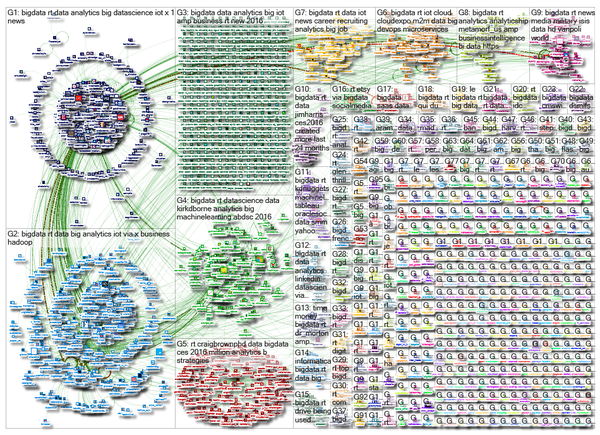REVIEW: Crawling social media and depicting social networks with NodeXL by Eruditio Loginquitas.appears in three parts: Part 1 of 3, Part 2 of 3 and Part 3 of 3.
From part 1:
Surprisingly, given the complexity of the subject matter and the various potential uses by researchers from a range of fields, “Analyzing…” is a very coherent and highly readable text. The ideas are well illustrated throughout with full-color screenshots.
In the introduction, the authors explain that this is a spatially organized book—in the form of an organic tree. The early chapters are the roots which lay the groundwork of social media and social network analysis. Then, there is a mid-section that deals with how to use the NodeXL add-on to Excel. Finally, there are chapters that address particular social media platforms and how data is extracted and analyzed from each type. These descriptors include email, thread networks, Twitter, Facebook, WWW hyperlink networks, Flickr, YouTube, and wiki networks. The work is surprisingly succinct, clear, and practical.
Further, it is written with such range that it can serve as an introductory text for newcomers to social network analysis (me included) as well as those who have been using this approach for a while (but may need to review the social media and data crawling aspects). Taken in total, this work is highly informative, with clear depictions of the social and technical sides of social media platforms.
From part 2:
One of the strengths of “Analyzing Social Media Networks with NodeXL” is that it introduces a powerful research method and a tool that helps tap electronic media and non-electronic social network information intelligently, in a way that does not over-state what is knowable. The authors, Derek Hansen, Ben Schneiderman, and Marc A. Smith, are no strangers to research or academic publishing, and theirs is a fairly conservative approach in terms of what may be asserted.
To frame what may be researched, the authors use a range of resources: some generalized research questions, examples from real-world research, and step-by-step techniques for data extraction, analysis, visualization, and then further analysis.
From part 3:
What is most memorable about “Analyzing Social Media Networks with NodeXL” is the depth of information about the various social network sites that may be crawled using NodeXL. With so many evolving social network platforms, and each capturing and storing information differently, it helps to know what an actual data extractions mean.
I haven’t seen the book personally, but from this review it sounds like a good model for technical writing for a lay audience.
For that matter, a good model for writing about topic maps for a lay audience. (Many of the issues being similar.)

